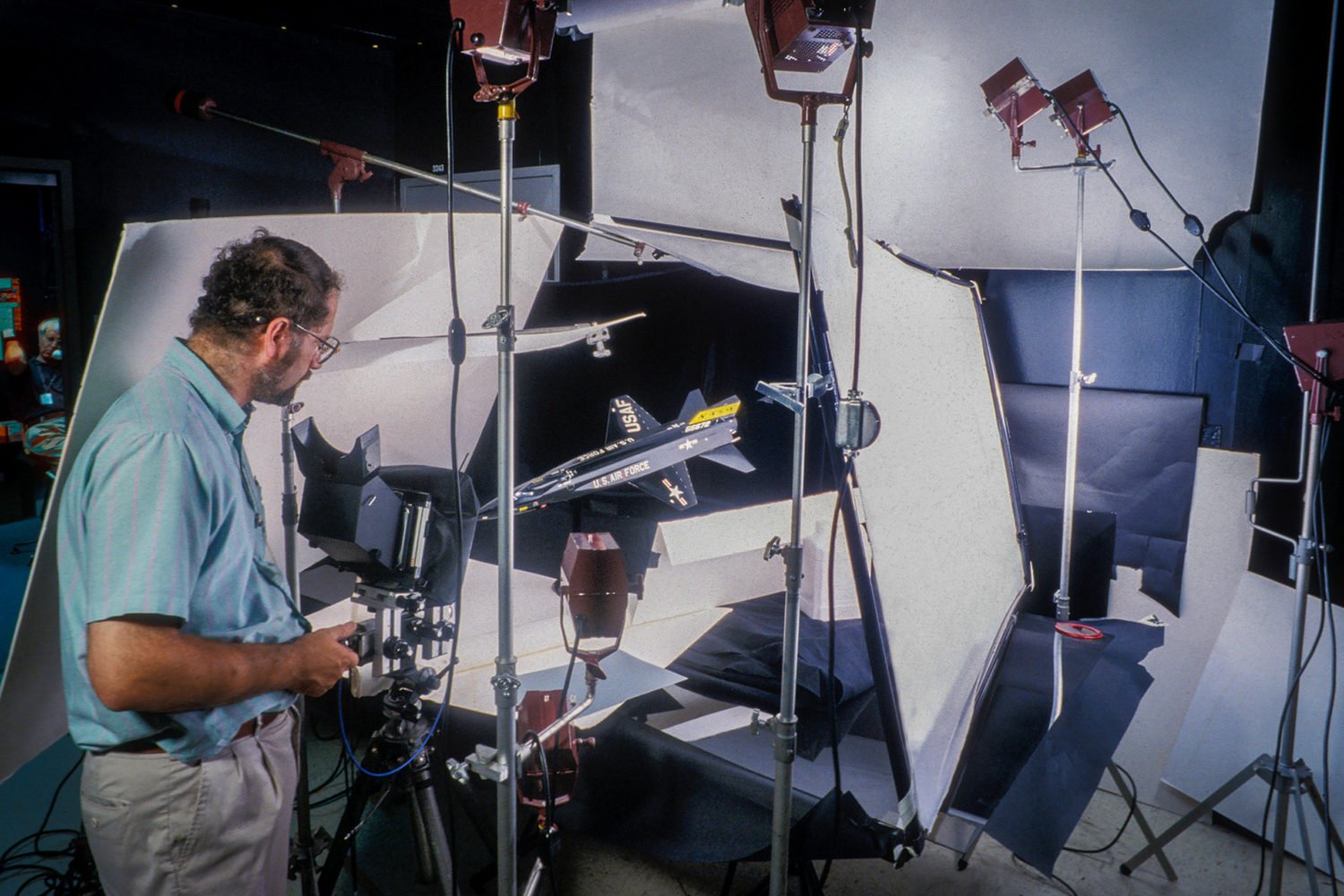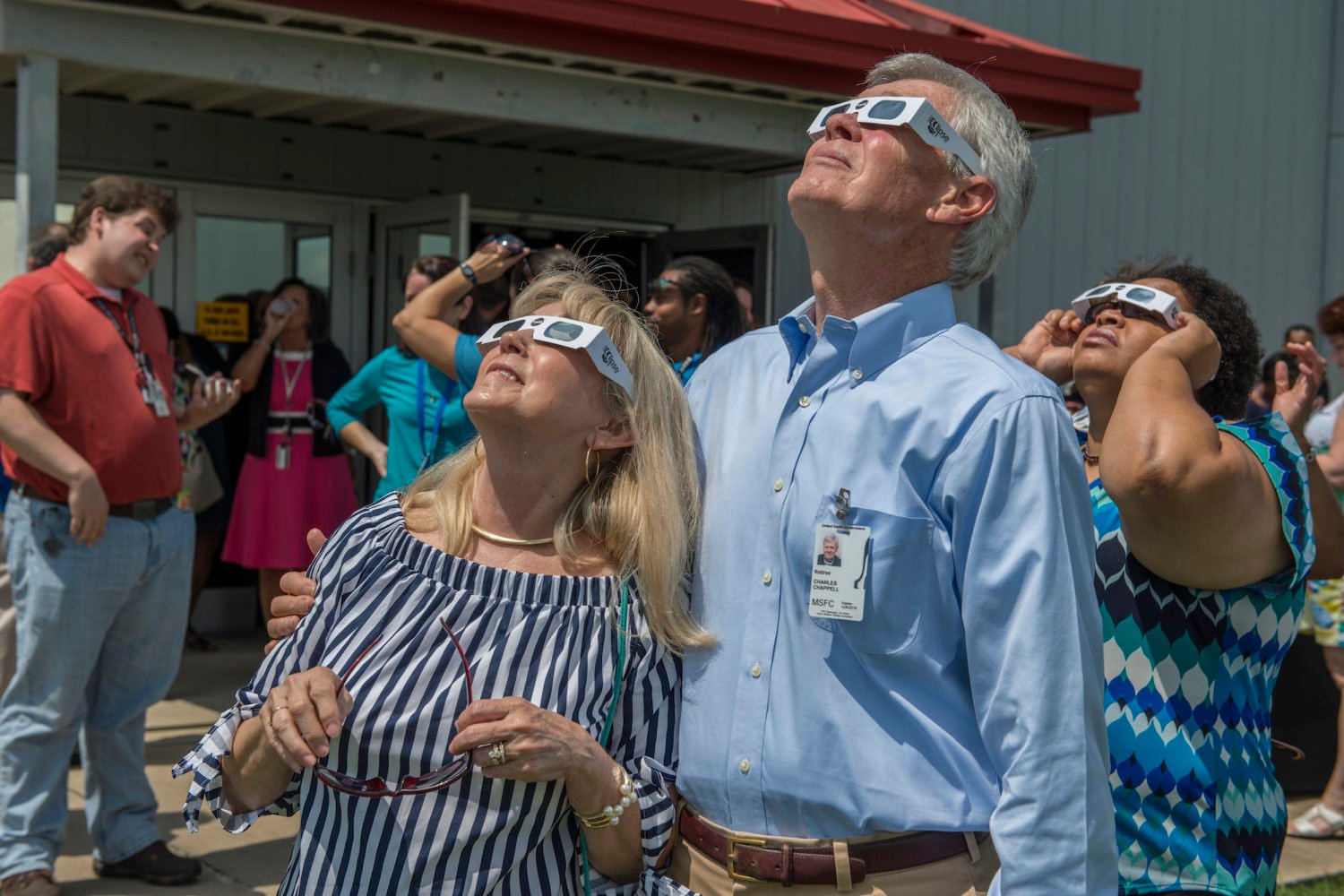Looking for a bright spot on the horizon in 2020? Here’s a suggestion: Look up into the sky over the next week.
The planets Jupiter and Saturn all this week are creeping closer together, and on Monday, December 21—the winter solstice—their orbits will be so aligned that from Earth, they may appear as something special in the night sky.
“Jupiter will be closer to Saturn than we’ve been able to see in 800 years,” says Shauna Edson, an astronomy education program coordinator at the National Air and Space Museum. “This one is really notable because they are .1 degree apart in the sky. That is close enough that seen through binoculars or a telescope, they are both visible together in the same view, which is extremely rare. No one in living memory has seen a conjunction this close.”
A conjunction, Edson explains, is when two objects appear to come close together in sky. The two planets, she says, will still be at least 500 million miles apart—but from our line of sight, they’ll look to be on top of one another.
Jupiter and Saturn do come close to each other every 20 years or so, but their tilts are usually not so in sync. “What is cool about this year,” Edson says, “is they are at a point in their tilt that they are almost the same orbit.” Which is why many are calling it the Great Conjunction of 2020.
Because no one alive today was around in the Middle Ages of 1226 to see this, Edson says, “We aren’t quite sure how it is going to look. We’ve done simulations, but we won’t actually know until Monday the 21st really how it looks. Will it be two little dots close together or will they look like one very bright object? It may depend on your eyesight, honestly.”
Patrick Hartigan, a professor of physics and astronomy at Rice University, says that it will look like a double planet in the night sky.
The good news is that you don’t need any special equipment to see this celestial occurrence: Weather and clouds permitting, you should be able to look into the southwest sky shortly after sunset and see the planets—bigger and brighter than stars—with your own eyes, though you won’t be able to make out details such as the rings of Saturn or moons of Jupiter without good binoculars or a telescope.
Edson recommends going out for an early peek in the next few days, so you can more easily find the spot to look come Monday. Aim for a location where you have an unobstructed view of the southwest horizon.
“The planets are already pretty close right now,” she says. “It’s certainly worth doing some practice looks in the coming week. Because they are so bright, they become visible before the sky is fully dark. By the time the sky is fully dark, they’ll be lower and harder to find. So, once the sun has set, find where the sun has disappeared, where there’s a twilight glow, and go a little to the left, and look up not too high. You know the sign-language symbol for Y? You fold down your three middle fingers so just your pinkie and thumb are sticking out. That distance from pinkie to thumb is about 20 degrees, and that’s how high to look.” Timeanddate.com also provides a helpful tool to the sky above us.
Sunset in Washington will be 4:50 on Monday; a half hour or so after that is when to look, Edson says, since it will be dark enough to spot the planets but they will still be high enough in the sky to see.
Today and tomorrow, a crescent moon will be close to the planets, she says, though today might be too cloudy to see anything. “If you’ve also got a crescent moon, it will be your guide to look in the right part of the sky,” Edson says. Thursday, she adds, it might be possible to get a photo of the crescent moon and two planets together.
Edson says that prior to the pandemic, the Air and Space Museum was planning for a big viewing party on the National Mall for Monday night. Instead, it’s now doing virtual events, like a live Instagram discussion today at 3 p.m., and a live Facebook discussion on Thursday, December 17, at 1 pm. NASA is also planning a live event today at 3 p.m.
Many news reports have called this year’s conjunction the Christmas Star, but some experts have posited that the Christmas Star over Bethlehem was most likely not just a conjunction of Saturn and Jupiter, and may have involved a third planet, Venus.
“There is ongoing debate and study about what the Star of Bethlehem was and if there is an astronomical explanation,” Edson says. “It’s still an open question. There’s some speculation that the star of Bethlehem refers to a conjunction. If thinking of it as the Christmas Star has gotten people more aware of this beautiful thing we can observe, if the idea of it being a Christmas Star is meaningful for people, that’s great.”
Because in a year like this one, looking into the heavens isn’t a bad diversion. Says Edson: “Astronomy is great for pulling us out of our surface-level squabbles and reminding us there are bigger things than us.”




















